Army Wants Armed Ground Robot Prototype by 2019
Posted on
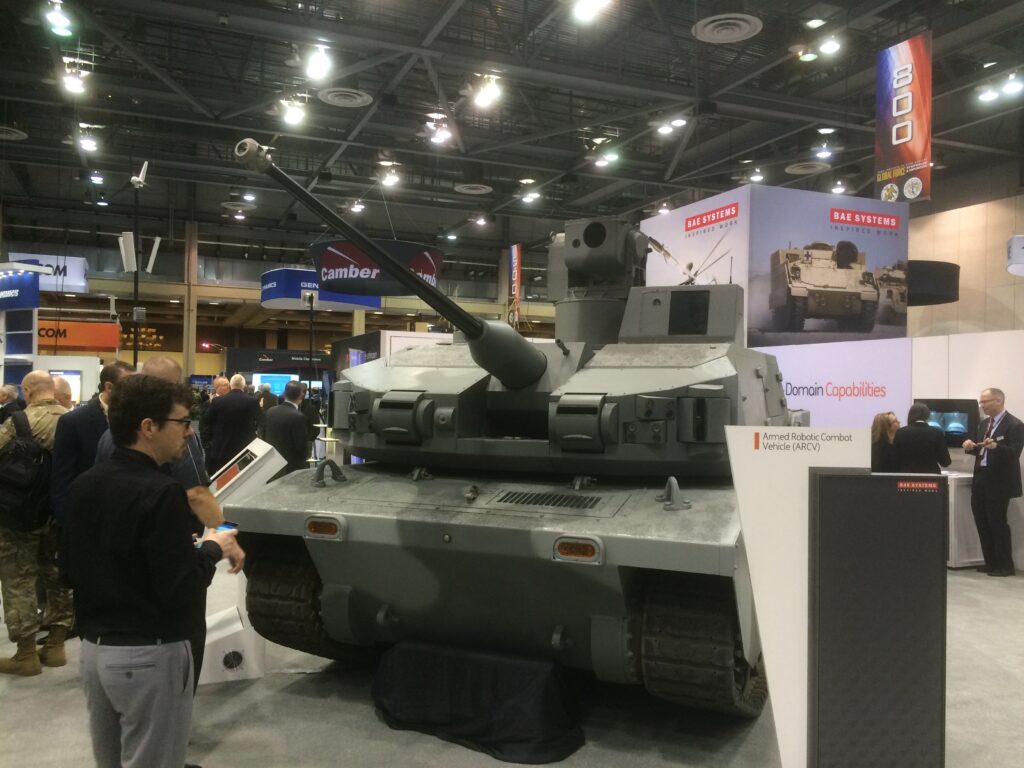
BAE’s Armed Robotic Combat Vehicle (ARCV), originally developed for the Future Combat Systems (FCS) program
WASHINGTON: After 20 years of cancelled programs, the Army now wants prototypes of all-new robotic and “optionally manned” combat vehicles by 2019 so soldiers can begin field-testing them in 2020. Compared to current vehicles, they’ll be lighter, smaller and optimized for urban combat, said Brig. Gen. David Lesperance, head of the armor school at Fort Benning, Ga. and the hand-picked head of the service’s Cross-Functional Team on future ground vehicles.
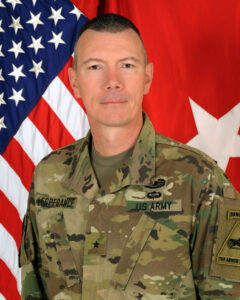
Brig. Gen. David Lesperance
Both established defense contractors and non-traditional companies are currently working on concepts, he told me and two other reporters this afternoon, and there’ll be intense experimentation, modeling, and simulation in the next “six to 12 months.”
Army Chief of Staff Mark Milley created the Cross Functional Teams last fall to advance his Big Six modernization priorities. What’s called Next-Generation Combat Vehicle (NGCV) is No. 2, second only to long-range artillery and missiles. Until this week, however, the CFTs have kept quiet. But Gen. Milley promised the Army would seek “radical,” ten-fold improvements in technology on a tight timeline. Lesperance’s proposal would definitely deliver on that promise — if it works.
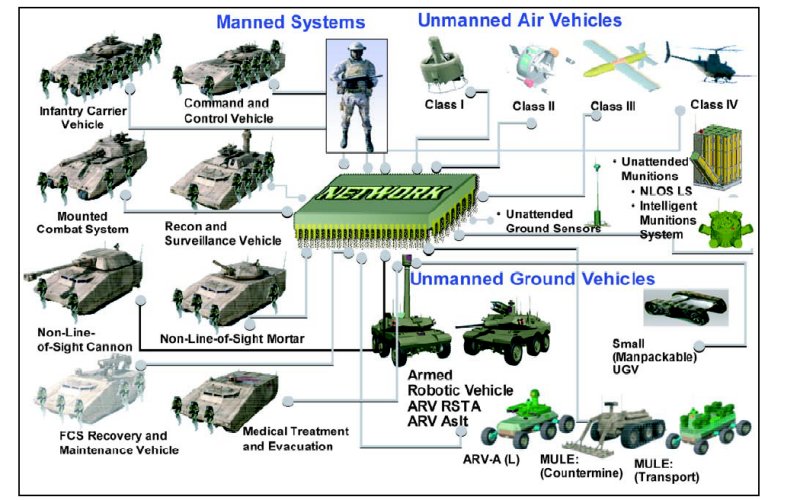
Army slide showing the elements of the (later canceled) Future Combat System
Risk Factors
The problem is the post-Cold War Army’s track record on new armored fighting vehicles is unblemished by success. (The successful Armored Multi-Purpose Vehicle is essentially a modified Bradley, not an all new design). While continually upgrading and modernizing the 1980s-vintage M1 Abrams tank and the M2 Bradley, the Pentagon has cancelled the M8 Armored Gun System (1997), the Crusader howitzer (2002), the Future Combat Systems (2009), and the Ground Combat Vehicle (2013). FCS in particular is the dead elephant in the room, because it was the Army’s last attempt at this kind of technological great leap forward, specifically including both manned and robotic vehicles.

Gen. Mark Milley
Milley has said specifically his Big Six modernization program won’t repeat the mistakes of FCS, and there are grounds for hope. First, technology is just better. The private sector has made dramatic advances in computing power, artificial intelligenc and ground robots since FCS was cancelled in 2009, when the iPhone was in its infancy and self-driving cars were a fantasy.
The Army, for its part, is taking care to prototype the new technology before it commits to an acquisition program, unlike FCS. It has also abandoned the cumbersome mega-program approach of FCS, which was a single contract for eight manned vehicles, multiple ground robots and drones, and a mobile network to link them all. The Cross Functional Teams, by contrast, are loosely coupled. Lesperance’s combat vehicle team holds weekly video conferences with the others, and it’s working closely with the CFTs for the soldiers who’ll ride in it, the network that’ll connect it, and the simulators everyone will train in. But they are separate efforts that won’t all collapse with the failure of the weakest link.

Mark Esper
Only this week are the CFTs beginning to talk to selected press. They’re opening up in anticipation of the AUSA conference in Huntsville, Ala. March 26th-28, where the Army will formally unveil the org chart for its new Futures Command, to which the CFTs will belong, along with other Army entities as yet unspecified.
“Futures Command is a critical component (of modernization), but we are impatient and speed is critical, which is why we have these Cross Functional Teams stood up now,” Army Secretary Mark Esper told the House defense appropriations subcommittee this morning. They’re called cross-functional because each CFT combines combat veterans, military futurists, scientists, technologists, and acquisition professionals — disciplines historically scattered around the Army — in order to short-circuit the bureaucracy and accelerate modernization. The goal, Esper told Congress, is to cut the time to field a new weapon system from 10-15 years down to five to eight.
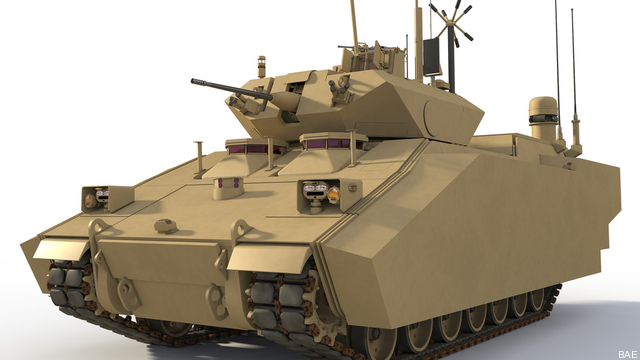
BAE’s design for the cancelled Ground Combat Vehicle
Robots & Humans
Brig. Gen. Lesperance — whose name means “hope” in French — understandably declined to commit himself to a fielding date today. But he wants what he calls “experimental prototypes” in “shakedown testing” in 2019, followed by full-up field tests with an operational combat unit in 2020. (That’s two years ahead of the original Next Generation Ground Vehicle timeline, which didn’t even include robotics). The Army will take the troops’ feedback and refine the design, tentatively aiming for a second round of field tests in 2022 and a third in 2024. Only then will the Army decide whether the vehicles are ready to produce.
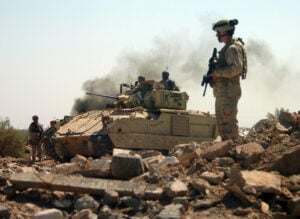
M2 Bradley in Iraq
Lesperance also declined to discuss the vehicles’ weight, armament, or power plant, saying those all remain to be decided. He’s still waiting for the industry concepts to come back and he doesn’t want to prejudge them or cramp their creativity, he said. He wouldn’t even say whether the Next-Generation Combat Vehicle would replace the M1 Abrams heavy tank or the M2 Bradley troop carrier, two very different roles. (Historically the Army’s prioritized replacing the Bradley, which has been upgraded so many times its electrical system and drivetrain are at their limits).
What Lesperance would say, however, was eye-opening enough. Over and over, he emphasized the new combat vehicles must be “optimized for fighting in dense urban terrain,” in contrast to current vehicles optimized for open-field blitzkrieg across Europe. Fighting in narrow streets, in turn, requires smaller vehicles than the massive M1, as does the need to deploy rapidly by air and to keep operating despite frequent disruptions to supply lines.
One way to reduce the weight is to take out the humans — not because people weigh a lot, but because the armor to protect them does. A robotic vehicle can be smaller, lighter, cheaper, and expendable, scouting ahead of the human force and springing traps like roadside bombs, landmines, and ambushes. It would be armed, Lesperance said, but a human soldier would always be “in the loop” and make any decision to use lethal force. Initially, the Robotic Combat Vehicle will probably require close human supervision, he said, but as artificial intelligence improves, he envisions the robots acting more and more autonomously.
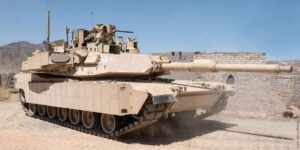
Army M1 Abrams tank with a trial installation of the Israeli-made Trophy Active Protection System (APS)
The Next Generation Combat Vehicle itself, by contrast, will be “optionally manned.” It’ll have the space, seats, and above all the protection to carry human troops, but it’ll also have enough artificial intelligence to navigate the battlefield without them. Depending on the tactical situation, commanders may decide to send in the vehicles unmanned, with few human crew, or with a passenger compartment full of infantry ready to jump out and assault.
Lesperance doesn’t know yet how many soldiers the NGCV troop carrier should fit, a hotly contested question. The tracked M2 Bradley can manage a fire team of four or five, the larger but more lightly armed eight-wheel-drive Stryker can carry a full squad of nine. Trying to combine better-than-Bradley protection with a Stryker-sized passenger compartment drove the cancelled Ground Combat Vehicle north of 60 tons, so the Army is now studying trade-offs among passenger capacity, protection, size, weight, and cost.
The robotic and optionally-manned machines are intended to complement each other, Lesperance said, but they’re “not inextricably linked.” In other words, one program might be delayed or even cancelled without dooming the other. Given the stakes and risks, that’s probably prudent.
Subscribe to our newsletter
Promotions, new products and sales. Directly to your inbox.
